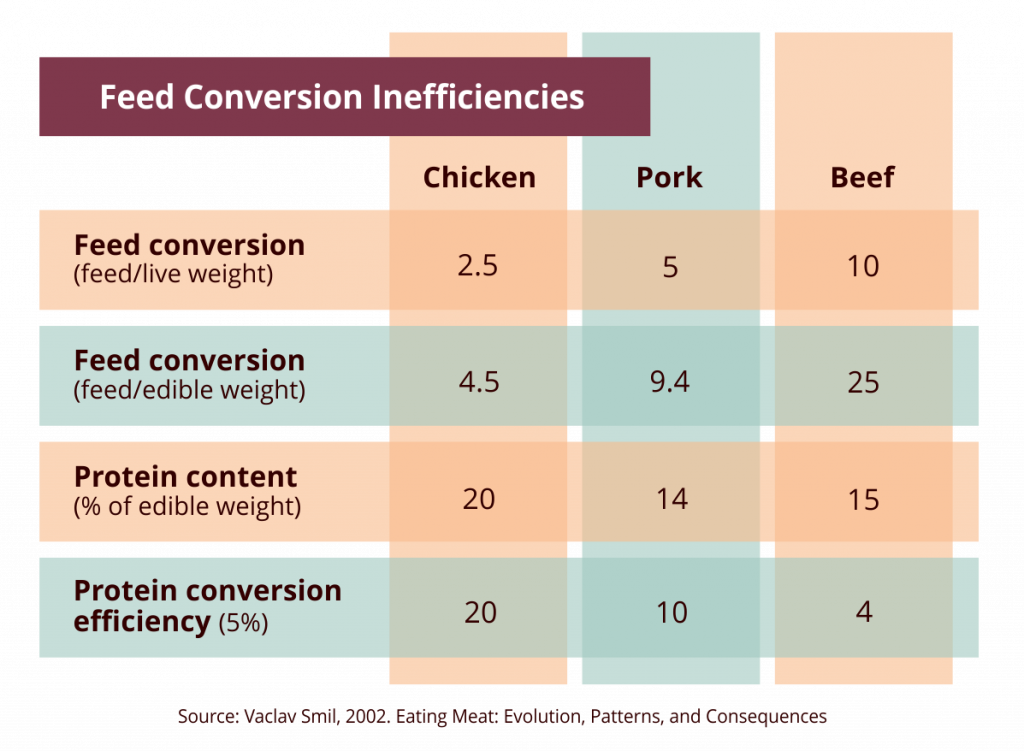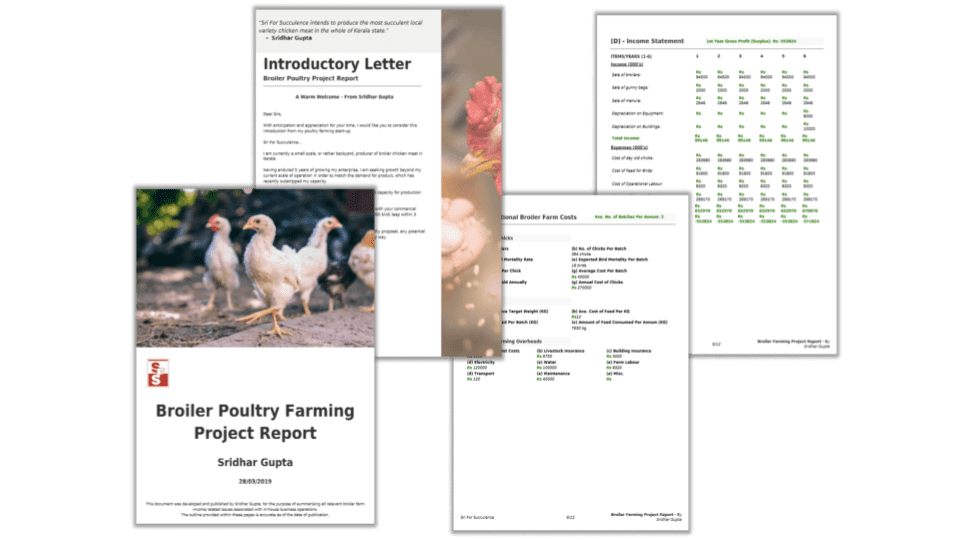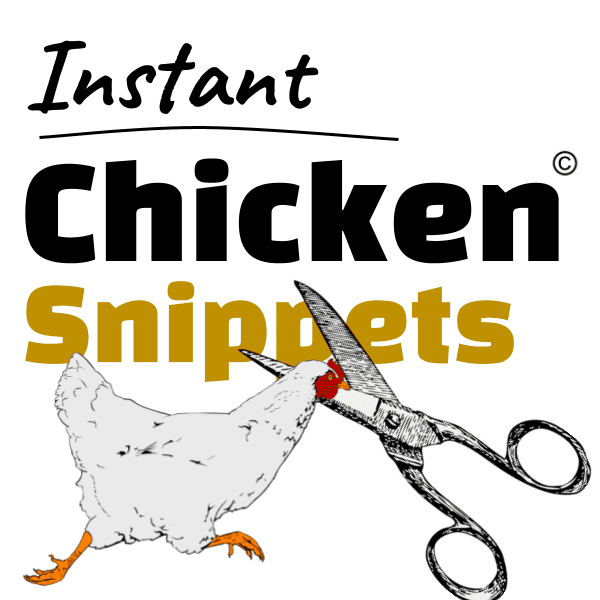The FAO projects that “…world demand for animal-derived protein will double by 2050.”
And compared with alternative land-based options like cattle rearing, chicken farming for meat and eggs has distinct start-up benefits.
But what are the benefits of poultry farming?
And are there any drawbacks?
To help you gain full confidence in your investment decision, I’ve put toegether this quick list.
Advantages of poultry farming
- Relatively low footprint & capital investment
- Highly scaleable
- Side income potential
- Low economic barrier to entry
- Supported with financial incentives by most Governments
Disadvantages of poultry farming
- High proportional feed cost
- Cheap imported poultry products
- Poor chick availability
- Price volatility
Top 5 advantages of poultry farming
1. Relatively low footprint & capital investment
By-enlarge the cost of land is the primary contributor to capital cost for agricultural start-ups.
It skews the entire return on investment outlook.
Otherwise profitable looking proposals can become quickly undermined by prohibitive land cost.
But there’s just no way around the cost of acquisition.
Unless you already own land, that is.
But even if you’ve got to go to market to acquire land for your agri-start up – poultry farming registers much cheaper land costs by comparison.
The net financial yield of a broiler chicken compared with beef cow for example is comparable.


Write Your Poultry Business Plan -
in Just 90 Mins!
Poultry Project Reporter 2.0 - fastest way to write your project report online.
Get Poultry Project Reporter 2.0In the case of broiler chicken vs. beef cow, it is evident from the graphic above that broilers are more efficient converters of feed into edible protein than their bovine counterparts.
Couple that with the huge discrepancy in comparative space requirement between a cow and a chicken…
…and you’ve got a much cheaper capital outlay for greater yield.
Let’s take this practical example…
Adequate grazing ground required for 40 cows, according to Bertie Troy, MD of Grasstec dairy consultants is 1 acre (Farmer’s Weekly magazine).
The average liveweight of a beef cow in the UK is: 346.1 kilograms (Statista).
On the contrary for a broiler, the average liveweight is: 2.36 kg (Poultry Network).
Converting the cattle into edible protein we get 52 kg of nutrionally available meat.
And for the broiler chicken 0.48 kg of edible chicken meat.
Roughly, therefore we get a protein yield ratio of about 100 broiler chicken to 1 beef cow (derived by weight).
So, a herd of 40 beef cows reared on 1 acre, would compare to the broiler equivalent of 597 sq.m (1/6th acre) for 4,000 hens according to free range regulations in the Netherlands, for example.
Broilers therefore use approximately 15% of the free-range grazing space of cows for the same edible protein output by weight.
Poultry farmers save on 85% of the land land cost compared with their cattle rearing counterparts.
What about building costs for housing?
Cows require “10.5 sq m per cow” according to the Agriculture and Horticulture Development Board (UK).
Broilers require 0.08 sq m per fully grown broiler of 2.36kg.
At an equivalent edible protein ratio by weight of 100 broilers to 1 cow, you need only 77% of the housing floor space to raise broilers vs. cows.
2. Highly Scaleable
Given the relative space requirement discrepancy, poultry farming is far more scaleable.
Multiplying your broiler flocks using multi-flock production models will help you increase revenue with little relative land increase.
So, on a small plot – say, under an acre you could raise 24,000 broilers.
To double output, you double the land space. no problem.
3. Side income potential
Raising broilers produces reusable by-products which otherwise would be wastage from processing.
Blood, feathers, feet, liver – all of these have resale value on the open market.
If processing is done on-site, this by-product reuse can contribute a significant addition to your bottom line.
Also, poultry manure resale, is an additional benefit.
Whereas cows deposit manure into their field which fertilises regrowth, manure of broilers reared indoors can be collected, bagged up and sold to agri and horticultural growers.
This brings in additional income, supplementary to the sale of meat.
4. Low economic barrier to entry
Let’s take 100 layer hens, they produce 80 eggs per day at peak production.
That’s 560 eggs per week.
If typical household consumption of eggs in Philippines is 336 eggs per year (Arcgis / Heligilibrary / Science Direct)
A backyard flock raised on 8 sq. m of land can feed 87 households.
The only upfront cost being:
- feed
- brooder lighting & heating
- food and watering equipment
- 100 chicks (or pullets, if point of lay are used instead)
A relatively low barrier to entry for most economies.
5. Supported with financial incentives by most Governments
Given the advantages of poultry farming above, Governments are offering attractive financial subsidies and incentives to agripreneurs to start broiler or layer farms.
For example, NABARD’s back ended subsidy called Poultry Venture Capital Fund (PVCF) offers 25% capital loan paid at the end of term.
A substantial capital cushion granted upon the successful completion of the qualifying period of trade.
Top 4 Disadvantages of Poultry Farming
1. High proportional feed cost
Problem: It’s a well known fact that 60-70% of the direct cost of sale in poultry farming is attributed to feed.
Corn (maize) is notorious for fluctuating prices and governments have been known to manipulate export tariffs to try to incentivise the retention of corn stock.
Low harvest levels leading to shortages exert upward price pressure on corn .
Couple that with price increases from resource competition through the pursuit of greener alternative fuels and the humble ubiquitous corn grain has become the subject of a modern day economic tug of war.
Solution: Farmers are exploring alternative feed ingredients to shelter their exposure corn price hikes.
2. Cheap imported poultry products
Problem: National sovereignty over poultry farming is under fire within many borders.
In many developing economies worldwide our poultry compatriots are being opposed by ‘unfairly’ priced broiler meat and layer eggs.
This depresses demand and prices domestic producers out of the market.
Whilst governmental bans and import levies would even the playing field, there must be a more direct tackle on the matter…
Solution: Domestic producers aim for more premium commercial buyer and specialist consumer segments in the marketplace. Commanding a higher price for better quality product.
3. Poor Chick Availability
Problem: On occasion (or rather more frequently as the case may be) getting hold of good quality chicks can be a problem for today’s poultry farmer.
Domestically, some economies have at best unreliable supply of chicks.
This introduces critical uncertainties into the businesses of farmers whose trade suffers unscheduled delays – with hidden costs.
Solution: Partner with quality hatcheries (overseas and domestic) who are seeking for a more integrated arrangement.
4. Price Volatility
Problem: A cumulative effect caused largely by the factors above is price volatility.
Egg and chicken meat prices tend therefore to abide in swings and roundabout that vary from ‘the norm’ to loss making.
This variability in pricing proves disruptive to the onward plans of the poultry farmer.
Many in fact lose heart at this fluctuation and fold their enterprise.
Is there a better way?
Solution: Aim for buyer and consumer segments in the market with less price sensitivity.
Decide if poultry farming is feasible for you
Those were the benefits of poultry farming as I see them and also some drawbacks to consider.
Has this sparked your interest to find out if poultry farming is financially feasible for you?
Then, I highly recommend Poultry Project Reporter 2.0
It’s a software that I produced that helps you build egg or chicken meat production scenarios and financial outcomes for broiler and layers farming projects.
With built in calculation it’s a valuable tool for supporting your investment decision making.
Plus, it’s also the fastest way to write a poultry farming project report.

Leave a Reply